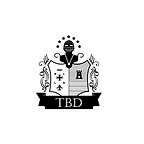This is how everything began
In 2008, when the financial crisis hit, it took less than a year for the world financial system to break down and for the global economy to collapse.
In 2008, I was studying in France at a “preparatory class” (2y of preparations for the Grandes Ecoles) and had already developed a strong interest for the financial markets and the opportunities they were offering in terms of mathematical application.
Therefore, in 2008, I began to ask myself what led to this financial crisis… and how come no one managed to prevent it from happening ?
After the prep school I went to a Business School and started to work on what I think was the source of the crisis. I’ve spent the entire year 2010, learning on optimal information, econometric theories, etc… By the end of this year, unlike all the theories we were taught while studying Finance, I came to the conclusion that :
Fact 1 — The market is not efficient at all
Fact 2 — The problem comes from the asymmetry of information.
In the classical theory of financial markets efficiency we are being taught that the price of the asset takes into account all the information related to this asset. In reality the price of an asset only reflects the knowledge of the financial market actors who are interested in this particular asset.
Keeping this hypothesis in mind, I’ve started to think about how I could improve the market efficiency and if it were possible to play on this lack of efficiency to provide a service that could create added values. From this moment onwards I’ve started to work on various prototype, trying to gather as many information as I could and to convert it into incentives on asset prices. However at that time I didn’t know how to code and without this component it was impossible to build a proper prototype.
That is why in January 2012 I took the opportunity offered by my Business School to join a Engineering School in Paris, with a major in Financial Engineering.
The Engineering School has been the decisive turning-point in this long-term project. During the two years I’ve spent there, I’ve managed to gain some coding experience, and most importantly I’ve discovered the world of machine learning and big data. These two new fields of expertise were an important missing part of my prototype.
Indeed, I knew that in order to make my idea of incorporating humongous amounts of information in the process of asset true price prediction, I had to find a way to systematically treat these information.
I completed my Engineering School with a master thesis project based on the use of machine learning to detect recurrent patterns in financial time series. Afterwards I found a job but kept working on my prototype after office hours.
My very first job was at Societe Generale as a consultant. I worked there as a Commando Developer for a few years on the debt market. For me, this job confirmed that the market wasn’t efficient at all and that the financial actors missed most of the information because they were not able to aggregate it as a whole.
By the end of 2014 my brand new prototype written in Matlab was ready to kick ass ! However, I still had to convince the financial market community of the potential of the idea, so I started to talk with desk managers at Societe Generale, who considered my project was not convincing enough.
This was a first — and harsh! — setback which later happened to be a deciding factor as it led me to another consulting mission (Gas Natural Fenosa, the Spanish gas firm where I worked as a developer) and to talk about how my project was going to friends. This is when and how Nidal, who — unlike me — enjoys coding, joined me as the head developer on the project. After looking at my prototype and its gloomy-looking code structure, Nidal was able to build a brand new and robust platform. This was the year 2015.
From this moment onwards, Nidal completely revamped the solution and migrated all the solution from matlab to python, with a possibility of scaling the project as many time as we want. In the same time, I greatly improved the prediction algorithm with new features and ideas I didn’t have the time to develop before.
I also worked on the business that could emerge from our solution. By the end of 2016 we had a clear idea of what we wanted. We were gonna build a SAAS platform to give access, to anyone who subscribed to our offer, to all of our research and prediction: the idea of our society, TBD-RESEARCH, was born !
During the year 2017, thanks to my brother who worked in financial market for a long time, I’ve started to meet private investors. In the same time I’ve started a new job as head of research and development in a French startup, which allowed me to improve my understanding and the possible application of Big Data and Machine Learning. At the same time, Nidal continued to industrialise the global algorithm, adding features after features.
By September 2017, we decided that we were ready to jump into the real world by creating the company. From September to November we built the financial model of our society, we talked to various people in order to prepare us to this next step. In late November, the idea became ~ administratively ~ real and will very soon be the founders of TBD-RESEARCH, a brand new french startup company.
